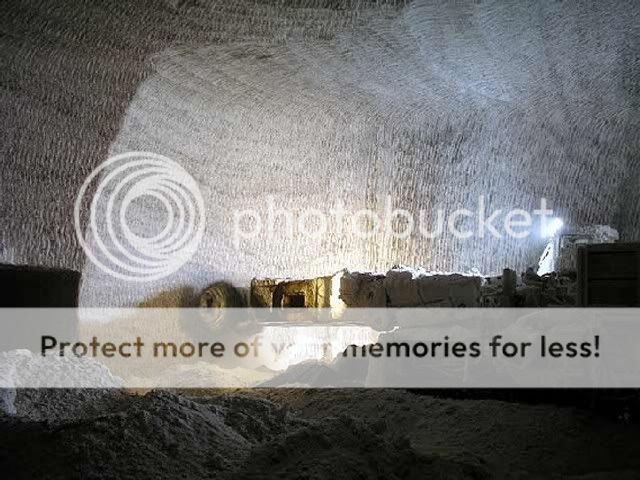
Legacy of Salt
Scientists believe that, initially, seas were not salty. It took
millions of years to wash out some of the salt locked up in the
rocks of continents and for the waters to become brine. About 350
million years ago a large part of North America was covered by
ocean. In places where bays existed with very restricted openings
to the ocean, salt was deposited in great quantities by solar
evaporation as the seas retreated. The deposits were subsequently
covered with earth sediments. It is to these locations in Canada
that we turn today for our salt supplies.
Canadas Deposits
It is estimated that Canada has more than one million billion
tonnes of salt, or halite, as it is called in geological terms, in
three major rock formations. Ontario salt deposits are found on the
edge of a saucer -shaped geological structure known as the Michigan
Basin, which underlies much of southwestern Ontario. There are
formations at depths of 275 in to 825 metres in and the beds are
from 90 in to over 200 metres in thickness. These beds are also
relatively flat and undisturbed.
In the Salt Mines
Conventional mining methods, usually room and pillar, are used to
retrieve rock salt from depths of 200 m to 600 m. A vertical shaft,
about 5 m in diameter, is sunk to the salt and used to lower
workers and machinery and to haul out the crushed rock salt. The
openings in a room-and-pillar mine vary from 9 m to 15 m in width -
about the size of a small house. Pillars of solid salt are left to
support the roof of the mine; from 40 to 60 per cent of the
material must be left for this purpose.
The mining operation includes undercutting and/or side cutting
the face to be mined, drilling holes in the face for use of
explosives, and blasting so that the broken ore can be loaded on
trucks and crushed before being hoisted. The milling of rock salt
is done underground or on the surface mine site. The crushed rock
is brought to the surface where it is further crushed, screened and
sized. In the process, impurities of gypsum, anhydrite and
limestone are removed, leaving the product with a purity of about
96 per cent or better. The products range in size from a piece one
centimetre in diameter to a fine powder. unrefined rock salt is
useful for the manufacturing of chemicals and for winter snow and
ice control on roads.
Brining is a method whereby water is injected into salt deposits
at up to 1 000 metres in depth and the resultant brine, or
saturated salt solution, is pumped to the surface. A brine field
may have anywhere from two to twenty wells. The brine contains
about 25 per cent salt, which is about 300 grams of salt per litre.
Only about one quarter of Canada's salt is produced by this method.
Most of this production is shipped as brine for chemical
manufacturing.
Your work here is to better understand how the transformation
of this area took place over millions of years.
First standing just outside the fenced area take an elevation
reading to better see where the sea level used to be.
Next while you oversee the surface of the mine area (left side of
the street) you will see the salt elevator. Using the height of the
fence judge the height of this elevator.
Last take a photo of yourself with a company sign in the
background. (be sure not to be on the property) E-mail me with the
answers you have determined and post your picture at the mines on
the log page.
Be sure to e-mail me within 7 days of logging the cache to
get credit for your work. If the rules of finding an Earthcache and
e-mailing the owner is not followed your log will be deleted
without notice!